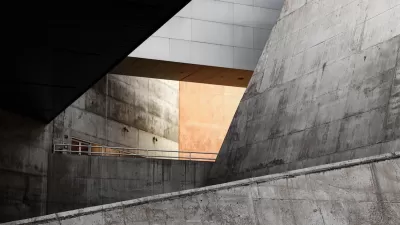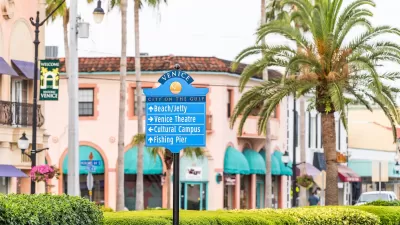Anthony Flynt explores the motivations behind Robert A.M. Stern's recent revival of the Garden City as a model for future development. Among the benefits of the model proposed by Ebenezer Howard in 1902, according to Stern: equity and comfort.
"Stern has written many large books," writes Flynt, "but with Paradise Planned, he is on a particular mission: to celebrate the 19th century town planning movement, and suggest the century-old template holds useful lessons for 21st century development."
The book's archive of garden cities is embedded on 12 pounds and 1,000 pages, but the key question, according to Flynt, is whether the Garden City is a model that actually works.
Stern also provides instructions for making garden cities a model for future development: "Legacy cities such as Detroit may be perfect testing grounds, he argues, not least because the infrastructure is in place for a reinvention of the urban grid. The key ingredients in the recipe — a town square, a church, a transit station, a corner store, hotel, smaller houses (think Forest Hills in Queens) — need only be dispensed in quantities that are not as intensive as Midtown Manhattan."
Flynt's exploration of the topic also discusses Howard's mathematic approach to equity and another under-appreciated benefit of the neotraditional design components of garden cities: unlike much modernist design, historic forms provide comfort.
FULL STORY: Why the 'Garden City' Is Making an Unlikely Comeback

Planetizen Federal Action Tracker
A weekly monitor of how Trump’s orders and actions are impacting planners and planning in America.

Congressman Proposes Bill to Rename DC Metro “Trump Train”
The Make Autorail Great Again Act would withhold federal funding to the system until the Washington Metropolitan Area Transit Authority (WMATA), rebrands as the Washington Metropolitan Authority for Greater Access (WMAGA).

The Simple Legislative Tool Transforming Vacant Downtowns
In California, Michigan and Georgia, an easy win is bringing dollars — and delight — back to city centers.

Albuquerque’s Microtransit: A Planner’s Answer to Food Access Gaps
New microtransit vans in Albuquerque aim to close food access gaps by linking low-income areas to grocery stores, cutting travel times by 30 percent and offering planners a scalable model for equity-focused transit.

This City Will Pay You to Meet Your Neighbors
A North Kansas City grant program offers up to $400 for residents to throw neighborhood block parties.

Commentary: Our Silence Will Not Protect Us
Keeping our heads down and our language inoffensive is not the right response to the times we’re in. Solidarity and courage is.
Urban Design for Planners 1: Software Tools
This six-course series explores essential urban design concepts using open source software and equips planners with the tools they need to participate fully in the urban design process.
Planning for Universal Design
Learn the tools for implementing Universal Design in planning regulations.
Smith Gee Studio
City of Charlotte
City of Camden Redevelopment Agency
City of Astoria
Transportation Research & Education Center (TREC) at Portland State University
US High Speed Rail Association
City of Camden Redevelopment Agency
Municipality of Princeton (NJ)




























